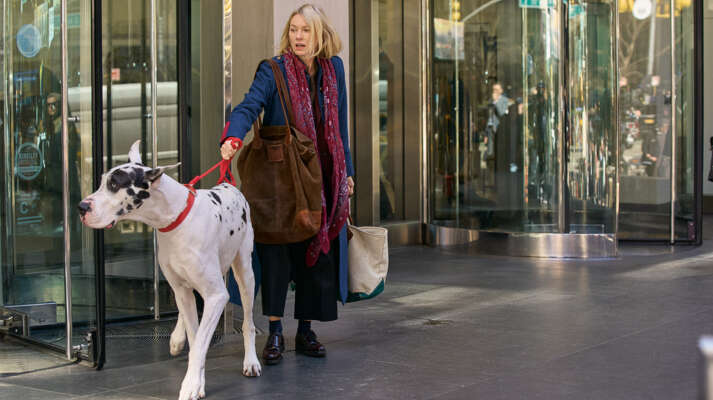Beirut's Golden Age
The real city behind the film Beirut
Beirut's Golden Age
Written by Peter Bowen
Brad Anderson's political thriller Beirut begins in 1972 when diplomat Mason Skiles' (played by Jon Hamm) world is tragically turned upside down. A few years later, the glamorous, cosmopolitan city where Beirut takes place will also take a tragic turn as simmering internal tensions erupt into outright violence. When Skiles returns ten years later to help negotiate the release of a kidnapped friend, he is greeted by a city ravaged by nearly a decade of civil war and foreign incursions. For Anderson, the character, "this damaged soul in a damaged city," reflects in many ways the tragedy of this great city.

To understand what was lost, it's helpful to recall the period before, when Beirut was known as "the Paris of the Middle East." One of the oldest cities in the world, Beirut has often been under rule of foreign powers, be it the Roman or Ottoman Empire. For the last thousand years, it has hosted a diverse population of Muslims, Maronite Christians, and Jews, as well as a wide range of European visitors. After Lebanon gained its independence in 1943, Beirut became its capital and flourished as an intellectual and financial center, as well as a tourist destination.

In the fifties, Beirut entered its golden era. Luxury hotels opened on the beaches of the Ain El Mreisseh neighborhood. On the nearby Rue de Phénicie, an assortment of nightclubs sprung up, chic watering holes where one might spot a movie star, foreign celebrity, or oil millionaire. The nearby American University of Beirut served as the intellectual hub with local cafes abuzz with fast-talking, chain-smoking students.

Perhaps the oldest and most famous destination was the Saint George Hotel. Designed by French architect Auguste Perret, the modernist structure opened in 1934, quickly becoming a mecca for Beirut's jet set, including Brigitte Bardot, Peter O'Toole, Elizabeth Taylor, and Richard Burton. Double agent Kim Philby could often be seen in the hotel bar, giving the place an aura of intrigue and suspense. Lebanese historian Georges Corm remembers it as "the rendezvous of Beirut's crème de la crème."

Further out of town, The Sporting Club, which was founded in 1952, became a favorite hangout for successful Beirut businessmen to swim and have an afternoon cocktail. The large Casino du Liban, just a drive up the coast, presented an array of Middle Eastern and European performers from Duke Ellington to Jacques Brel.

In the mid '60s, Beirut's reputation as a glamorous playground for movie stars and international spies became bolstered by the movies. Partially because of its mystique and partially because of its generous tax incentives, Beirut became the go-to city for a wave of international productions. Peter Bezencenet's 24 Hours to Kill, a 1965 crime caper about a flight crew on layover in Beirut, made full use of the city and its surrounding countryside. In addition to sporting one of Mickey Rooney's stranger performances, the film provides a rare glimpse of jet-setting Beirut, including its international airport, the Phoenicia, the Excelsior, the St. George Hotel, and the Casino du Liban. Other now forgotten movies from the period—like Secret Agent 777, Where the Spies Are (with David Niven), Only when I Larf (with Richard Attenborough and David Hemmings) and Agent 505: Death Trap in Beirut—equally used the capital as a fantasy location of international intrigue.

Beirut Today
While Beirut has never fully recovered from the trauma of its civil war, it has emerged a different, but still creative center. "Beirut is a demanding city, and that makes it vital and alive," explains curator Ashkal Alwan in The New York Times, adding that "In Beirut, precariousness is a form of identity." It may not be the jet-setting destination it was in the '60s, but Beirut is nevertheless seeing a dramatic upsurge in tourism. A 2017 Executive Magazine article, "Lebanon is getting its tourism groove back," explores how the city has returned to being a hot travel destination. Condé Nast Traveler notes that "the city is buzzing with creativity," especially with the proliferation of design and art fairs. An Artnet post on the city's art week proclaims, "Beirut's Art Scene Is in the Midst of a Reawakening." While acknowledging all the very real issues—a refugee crisis, failing infrastructure, political instability—facing the city, a founder of one of Beirut's major galleries defines what makes the place unique—"Beirut is a real incubator: we have no other choice except to keep working."


